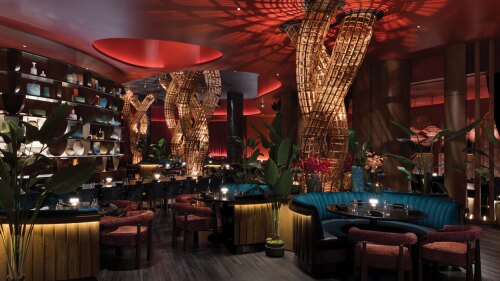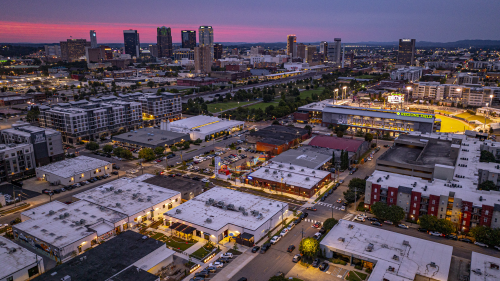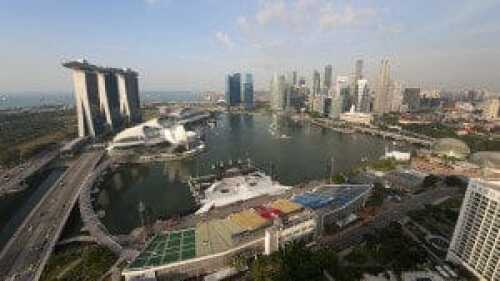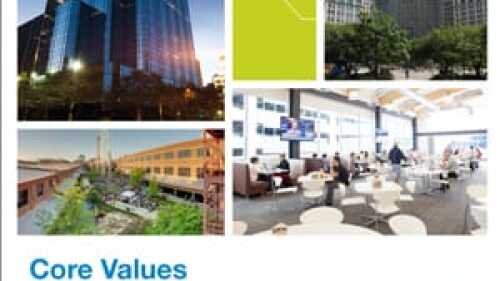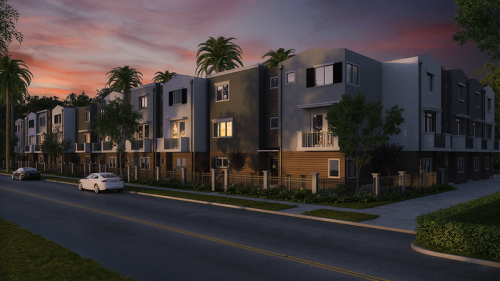Property Types
Hotels and Resorts
The hotel industry in the United States faces complex challenges in 2025, according to Jan Freitag, national director of hospitality analytics for the CoStar Group. During the “State of the U.S. Hotel Industry” presentation at the ULI 2025 Spring Meeting in Denver, Colorado, Freitag highlighted the challenges facing the hotel business amid macroeconomic uncertainty.
Once a sprawling expanse of uncharted land, Las Vegas, Nevada, has evolved into the entertainment capital of the world, a gaming super-hub, and a premier destination for sports. This remarkable transformation didn’t happen overnight; it stemmed from decades of strategic planning, investment, and visionary zoning recommendations.
Las Vegas is unlike any other place in America. Each year it draws more than 40 million visitors to the dazzling casinos and hotels that “turn night into daytime”—and transform the city into a glittering jewel in the desert. With 164,000 hotel rooms, Las Vegas is the largest hospitality market in the U.S.—outpacing Orlando, Florida, the next biggest market, by approximately 15 percent, according to JLL.
Industrial
Standing in the shadow of Regions Field and within earshot of Railroad Park, Birmingham’s Urban Supply hints at what the next chapter of downtown life could look like. Once-quiet brick warehouses are being steadily reimagined into patios, storefronts, and gathering spaces along a new pedestrian alley. Early tenants have begun to open their doors, and programming is slowly bringing people into the district. While the project is still in its early stages, the framework is in place for a vibrant hub that will grow block by block in the years ahead.
What trends are shaping the future of the industrial sector? Four experts from ULI’s Industrial and Office Park Development Council talk about the industrial submarkets and property types that offer the greatest opportunities, challenges developers face in bringing new projects to market, ways artificial intelligence and emerging technologies are reshaping the sector, tenant priorities, and other key trends.
After a quiet first half of 2024, CMBS originations increased 59 percent in Q3 on a year-over-year basis, according to the Mortgage Bankers Association’s Quarterly Survey.
Mixed-Use
Members of ULI’s Community Development Council speak about the impact of the slow economy, the increased appeal of smaller sites in denser locations, consumers’ current amenity preferences, the impact of ethnic and demographic changes, and the rising demand for housing that can accommodate multiple generations.
Founded by Washington, D.C., developers Ben and Daniel Miller, Popularise.com aims to put “the power back in the hands of the people who care.” The website allows the public to comment and vote on potential businesses that could be included in a proposed development site.
Lake Tahoe, the largest, highest-elevation alpine lake in North America, is one of the most treasured natural wonders in the United States. But its pristine natural beauty and abundant recreational opportunities have also put pressure on the area by bringing in growing numbers of vacationers and year-round residents. With its jewel-like fresh-water lake cradled by snow-peaked mountains even in the summer months, Lake Tahoe is one of the top international attractions in California.
Multifamily
The sharing economy is a hot topic; Zipcar, Uber, Airbnb, bike sharing, and shared workspaces are just a few of the brands and concepts in this space. With Oslo, Ditto Residential, a boutique residential developer in Washington, D.C., has reconceived and updated another time-tested sharing idea, house sharing—or in this case, apartment sharing, sometimes known as group living.
Singapore’s Urban Redevelopment Authority has transformed Marina Bay into mixed-use urban neighborhood. public open space, and source of drinking water for the country’s 5.4 million residents.
More than 30 of the nation’s leading multifamily developers, owners, and capital providers gathered in May to discuss issues facing the industry at the 2nd annual ULI/Carolyn and Preston Butcher Forum on Multifamily Housing in Houston, Texas, with four key themes emerging.
Office
Real estate developers around the world are responding to increased consumer interest in cycling and walking as preferred modes of transportation by building projects adjacent to trails, bike paths, bike-sharing stations, and other infrastructure that supports human-powered mobility, according to
Active Transportation and Real Estate: The Next Frontier, a new ULI report.
Active Transportation and Real Estate: The Next Frontier, a new ULI report.
Suburban office parks, which developed and spread far and wide as businesses left American cities, are now losing ground to those same cities, according to a new report by Smart Growth America.
At ULI’s Spring Meeting in Houston, AECOM global practice lead Andrew Laing traced the evolution of white-collar work spaces over more than a century in patterns driven primarily by technology.
Residental
Mercantile Place is a rental apartment community in downtown Dallas consisting of four separate and diverse buildings with a total of 704 apartments. Two of the apartment buildings were converted from office buildings, one of which was historic; the third is a renovated historic apartment building previously converted from office space; and the fourth is a new 15-story apartment building. Though the buildings are located on three separate blocks, they share amenities and parking, and the four buildings have been positioned and marketed together as one residential community.
Congress has thrown its support behind new legislation that aims to fix some of the problems in the condo financing program of the Federal Housing Administration (FHA). The Housing Opportunity through Modernization Act (H.R. 3700) will loosen some of the more stringent regulatory requirements specific to condo mortgage insurance that were introduced in the wake of the housing finance crisis.
The laws of supply and demand—and the need for neighborhood evolution—still apply when communities try to boost their supply of affordable housing.
Retail
For decades, civic leaders have tried to revitalize Market Street, San Francisco’s central thoroughfare, only to see their efforts founder. “I sometimes call it the great white whale of San Francisco,” says Eric Tao, managing partner at L37 Development in San Francisco and co-chair of ULI San Francisco. “Every new mayor, every new planning director, every new economic development director has chased that white whale.” This year, however, an international competition of ideas hosted and run by ULI San Francisco, with support from the ULI Foundation, generated fresh momentum for reimagining the boulevard. The competition drew 173 submissions from nine countries and sparked new conversations about the future of downtown San Francisco.
The OAK project began in 2009, when a development firm set their sights on the corner of Northwest Expressway and North Pennsylvania Avenue, the state’s most important and busiest retail intersection. As the region’s only parcel capable of supporting a vertically integrated project of this scale and density, that land represented an opportunity to create something truly special.
As aging retail continue to evolve, one increasingly popular trend has been to redesign malls as town centers—recalling a time when such commercial districts were the heart and soul of a community. Mall–to–town center retrofits are emerging throughout the nation, especially in suburban communities, where pedestrian-friendly, mixed-use environments are highly attractive to millennials now raising families.



